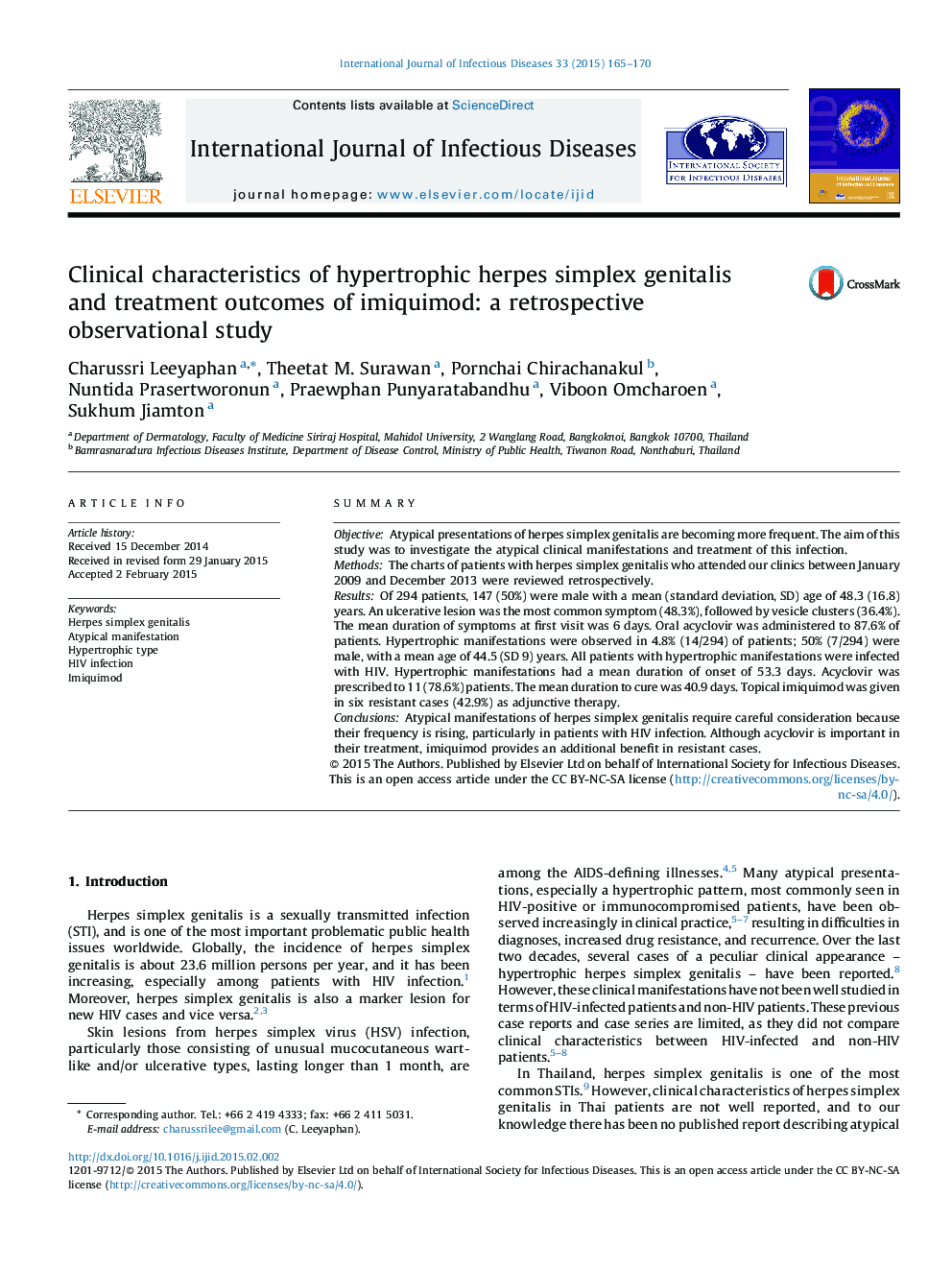| Article ID | Journal | Published Year | Pages | File Type |
|---|---|---|---|---|
| 3362158 | International Journal of Infectious Diseases | 2015 | 6 Pages |
•Atypical manifestations are not uncommon, accounting for 4.8% of all patients with herpes simplex genitalis.•Patients with the hypertrophic type were found to be younger and had a higher incidence of HIV infection, longer duration of symptoms, and longer duration to cure.•Imiquimod provided an additional benefit in the treatment of patients with hypertrophic lesions.
SummaryObjectiveAtypical presentations of herpes simplex genitalis are becoming more frequent. The aim of this study was to investigate the atypical clinical manifestations and treatment of this infection.MethodsThe charts of patients with herpes simplex genitalis who attended our clinics between January 2009 and December 2013 were reviewed retrospectively.ResultsOf 294 patients, 147 (50%) were male with a mean (standard deviation, SD) age of 48.3 (16.8) years. An ulcerative lesion was the most common symptom (48.3%), followed by vesicle clusters (36.4%). The mean duration of symptoms at first visit was 6 days. Oral acyclovir was administered to 87.6% of patients. Hypertrophic manifestations were observed in 4.8% (14/294) of patients; 50% (7/294) were male, with a mean age of 44.5 (SD 9) years. All patients with hypertrophic manifestations were infected with HIV. Hypertrophic manifestations had a mean duration of onset of 53.3 days. Acyclovir was prescribed to 11 (78.6%) patients. The mean duration to cure was 40.9 days. Topical imiquimod was given in six resistant cases (42.9%) as adjunctive therapy.ConclusionsAtypical manifestations of herpes simplex genitalis require careful consideration because their frequency is rising, particularly in patients with HIV infection. Although acyclovir is important in their treatment, imiquimod provides an additional benefit in resistant cases.
